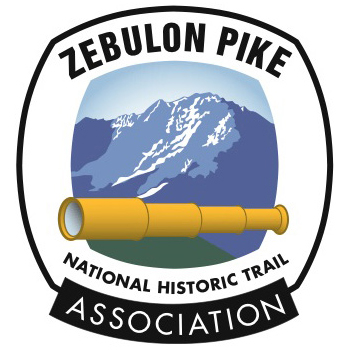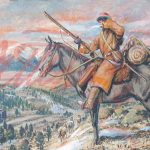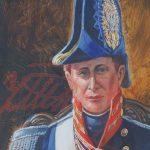Pike’s Legacy not only includes the gift he gave America on his best known Expedition, the SW Expedition, as well as in all the other portions of his life.
His early life, 1st Expedition and post 2nd Expedition (as well as his 2nd Expedition) stand out as other notable portions of his life. His values, principles, loyalty and example must be known and emulated.
Pike’s Early life (Pre-Mississippi Expedition)
REGION: Pennsylvania, West Virginia, Ohio, Kentucky, Indiana, Illinois
INCLUDES: birth, learning, his military life begins with his father at Ft. Massac, (IL-Ohio River), piloting Cargo boats from Pittsburg to the frontier, promotion to 1st Lieutenant, to Fort Kaskaskia, IL.
Zebulon Montgomery Pike was born during the Revolutionary War, on January 5, 1779, near Lamberton, now Lamington, NJ. His father Zebulon Pike fought with Washington and continued in the US Army at Ft. Massac, IL.
The younger Pike joined the Army with his father, was commissioned a 2nd lieutenant of infantry in 1799 and promoted to 1st lieutenant later that same year. He served with his family at a series of outposts in Ohio and Illinois – the northwestern frontier at the time.
He piloted cargo supply boats from Pittsburg to the American frontier. He got the attention of General James Wilkinson (Governor of the Upper Louisiana Territory) while serving at Forts Kaskaskia and BelleFontaine (north of St. Louis on the Missouri River).
Pike’s 1st Expedition (Upper) Mississippi 1805-6
REGION: Missouri (1st), Illinois, Wisconsin, Iowa, Minnesota
INCLUDES: sailing from Fort BelleFontaine to the rapids, battling the current, searching for future fort sites on America’s frontier, working with battling native (indian) populations, purchasing land in Minneapolis-St. Paul, battling St. Anthony Falls, waiting at Zebulon Pike Lake (Little Falls, MN), challenging the British and return.
Wilkinson (Governor of the Upper Louisiana Territory) ordered Pike to explore the source of the Mississippi newly acquired from France in 1803. Pike had several assignments including leading the expedition, mapping and noting geological features of the Upper Mississippi, taking latitude readings, surveying sites for future American forts, and confronting the British with border and treaty disputes.
The 265 day Mississippi River Expedition began from Cantonment BelleFontaine near St. Louis on August 8, 1805, traveled to Cass Lake, MN (then considered the headwaters of the Mississippi) and returned on April 30, 1806.
Lt. Pike ended up settling issues with the British, purchasing land from the Indians at the mouth of the Minnesota River now Minneapolis – St. Paul as well as scrutinizing a number of sites for future forts, and creating a short lived peace among the Indians.
Pike’s 2nd Expedition (Southwest) 1806-7
REGION: Missouri (2nd), Kansas, Nebraska, Colorado, New Mexico, Mexico, Texas & Louisiana
INCLUDES: exploring 7 states, internationally into New Spain- New Mexico, Mexico, promotion from 1st Lieutenant to Captain, confiscation of his papers, being allowed to continue talking and taking notes in New Spain.
Between July 15, 1806 and July 1, 1807 (351 days) Pike’s Southwest expedition was in the field, its members traveled through what would become the modern states of Missouri, Kansas, Colorado, New Mexico, and Texas. Most on the 1st Expedition volunteered for the 2nd Expedition.
Moreover, the expedition’s entry into Spanish territory also earned them an involuntary tour through today’s modern Mexican provinces of Chihuahua, Durango and Coahuila, making his reconnaissance of the Louisiana Purchase an international junket as well.
When Pike left St. Louis in 1806, none of these political entities existed as U.S. states; however, once in Spanish territory, the expedition traveled through formal geopolitical provinces lumped under the general rubric of New Spain: Nuevo Mexico (modern New Mexico), Nueva Vizcaya (Pike’s state of “Biscay” and today’s Chihuahua), Durango, Coahuila, and Tejas.
Pike’s capture by the Spanish led to Mexican independence, information leading to the 1846 Mexican-American War and the Alamo, and the development of the Santa Fe Trail.
Pike. Spanish General Salcedo confiscated Pike’s journal in Chihuahua They were not recovered from Mexico until 1910. Pike wrote an account from memory of his Southwest expedition. An original copy of this often translated 1810 version was donated to the San Luis Valley Museum in Alamosa, CO in 2017.
On his return from the second expedition from Louisiana to Fort BelleFontaine (St. Louis), he learned of his promotion to Captain during the Expedition.
Pike’s Later Life & Heroic Death on the Canadian Border
REGION: New York, Lake Ontario, Canada
INCLUDES: his climb from Captain to Brigadier General, and death.
In 7 years Pike quickly rose in rank – Captain in 1806 (during the 2nd Expedition) to Brigadier General in 1813 (during the War of 1812). In 1811, he became Lt. Col. Zebulon M. Pike, became a Colonel in 1812. and Brigadier General during the War of 1812.
During the War of 1812, Pike departed for the newly fortified rural military outpost of Sackets Harbor, NY on Lake Ontario and for what became his last military campaign. Pike successfully attacked York (now Toronto), on April 27, 1813. Pike was killed by debris from the British ammunition magazine blown up by the withdrawing British garrison at Fort York. He is buried at the Sackets Harbor military cemetery.
Legacy
Pike’s military accomplishments were widely celebrated and should be today. Pike was a model character.

![Introducing the General Zebulon Montgomery Pike INTERNational Historic Trail [ZPIT]](https://www.zebulonpike.org/wp-content/uploads/2018/07/21-St-Anthony-Falls-144dpi-wm-150x150.jpg)


